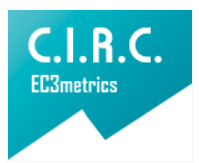Phases of adaptation’s process of new strategies for treating children’s articulation and phonological disorders
Fases del proceso de adaptación de new strategies for treating children’s articulationand phonological disorders
Main Article Content
This descriptive study had as a goal to characterize the steps that were followed to the adaptation of New Strategies’ for treating children’s articulation and phonological disorders from English into Spanish. Its method followed the steps as translation, the translation’s valuation by expert judges, the analysis of successes and differences between the Spanish and English versions, the preliminary test and the final evaluation. The participants were five phonoaudiologists and 21 children between 2 and 7 years old. The used instruments were New Strategies for treating children’sarticulation and phonological disorders, two qualification forms, a characterization form and an informed assent. The results showed the need to design linguistic resources and visual materials to be used into different proposed activities.
Downloads
Publication Facts
Reviewer profiles N/A
Author statements
Indexed in
- Academic society
- Bogotá: Corporación Universitaria Iberoamericana
- Publisher
- Bogotá: Corporación Universitaria Iberoamericana
Article Details
Alía, R. González J, Membrillera, A. Molinero, Serrano Martha. (2008) Comparaciones entre el ingles y el español. Tomado de:
http://centros5.pntic.mec.es/cpr.de.alcala.de.henares/pdf/secundaria/Aprendizajedeingles.pdf. Consultado el 10 de Octubre de 2008.
Bleile, K , Nelson, L, & Highnam, C (1997). New Strategies for treating children´s articulation and phonological disorders. Grupo de Estudios Fonológicos. Asha. Estados Unidos.
Caicedo, M. (2002). Introducción a la Sociolingüística. Universidad del Valle. Cali.
Escobar, M (2004). Adaptación transcultural de instrumentos de medida relacionados con las salud.
Gil, X (1999). Racionalismo y empirismo en la lingüística del siglo XVII. Cap.19. La gramática general y las gramáticas particulares.
Méndez, C (2001). Diseño y desarrollo del proceso de investigación. Bogotá: Edit. Mc Graw Hill.
Muñiz, J. Hambleton, R (2004). Directrices para la traducción y adaptación de los tests. Revista papeles del psicólogo. Vol.8. No.66. Noviembre.
Neusa, M.C. & De Brito, E. (2000). El proceso de la adaptación cultural de instrumentos. Revista Panamericana de Salud Pública. Vol. 9. No.1. Marzo. Washington.
____________ (2002). Adaptación cultural de instrumentos utilizados en Salud Ocupacional. Revista Panamericana de Salud Pública. Vol. 11. No.2. Febrero. Washington.
Vásquez, A. (1997). Aspectos de la sintaxis del adjetivo en relación con otras categorías léxicas. Revista Dialnet. Vol.23.No.2, 1997.
Villegas, F. (2004). Manual de logopedia: evaluación e intervención de las dificultades fonológicas. Barcelona. España. Ed. Masson, S.A. pág. 81 - 137.












